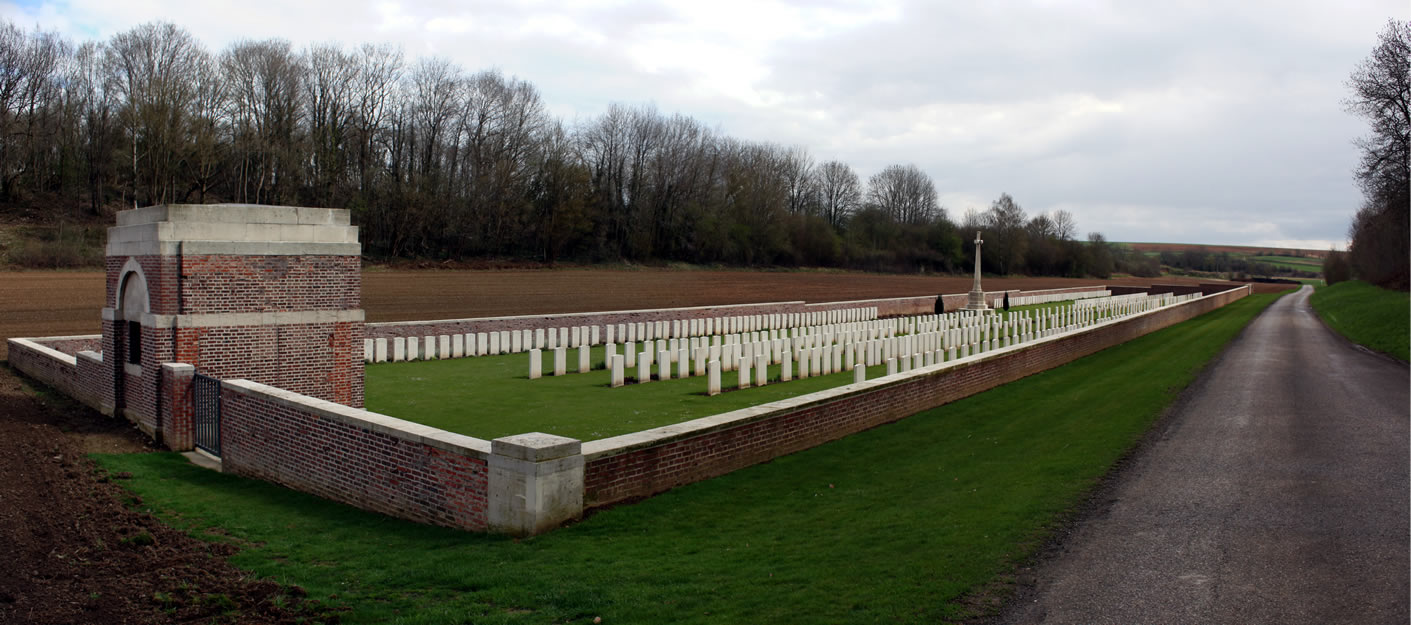There are three predominate features of the Somme—farms, woods, and cemeteries. The French and British took a different approach with this massive battlefield. Instead of having one giant cemetery, they have numerous “small” ones. When you consider that the Allies suffered nearly 700,000 casualties in a mere 4 and a half months of fighting in 1916, you need to adopt different techniques for burying your war dead.
I was headed toward a specific destination in the Somme, but after passing a dozen random cemeteries in the first 20 minutes, I had to stop and explore.
The following photos and description come from my journey on April 19, 2013.
This is the Norfolk Cemetery and at first glance, I estimated a few hundred buried here, but there are roughly 540. In addition, I only saw British graves, but there are also some Canadians, Australians, New Zealanders, South Africans, and one Indian.
I took a choppy video to provide better perspective and give my initial impression.
http://www.youtube.com/watch?v=ZCu7I8X_WsQ
The first thing that struck me was condition of everything. In just 20 minutes, I passed at least a dozen cemeteries. By the time I left the Somme, I passed several dozen more. Each cemetery was in fantastic condition. The logistics for visiting each of these spots and ensuring they look so good must be immense.
The graves were in decent condition after nearly 100 years.
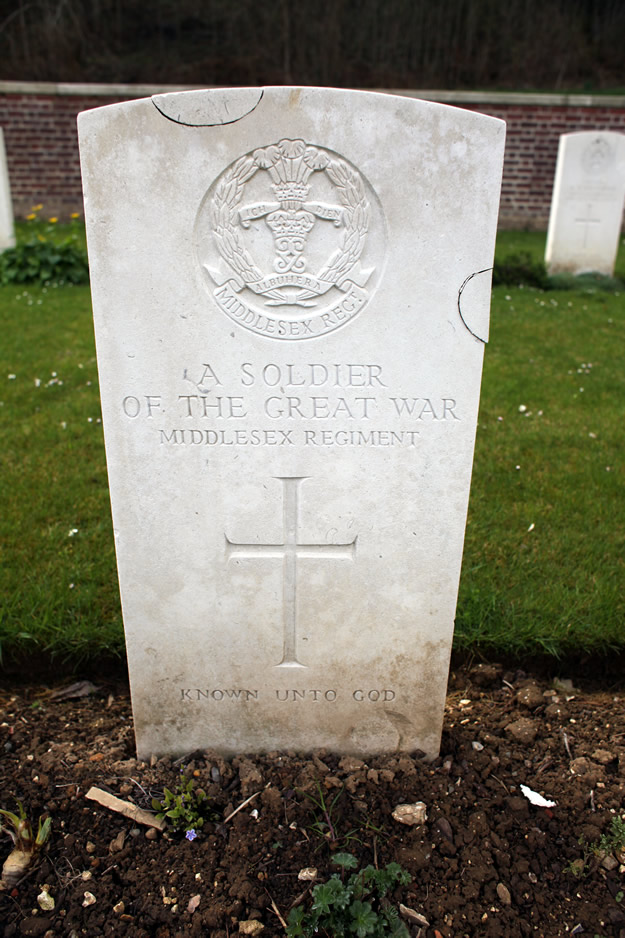
The grass was cut and each grave had some plant in front of it. This of course gave the visit a very peaceful feeling.
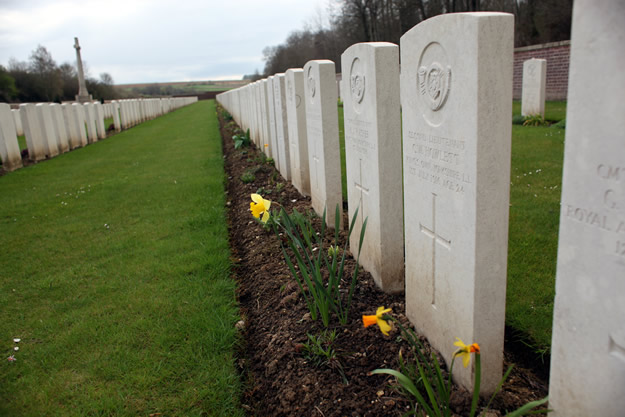
Each cemetery featured some sort of cross. Some were militaristic with swords and some were Celtic style, but they were always unique.
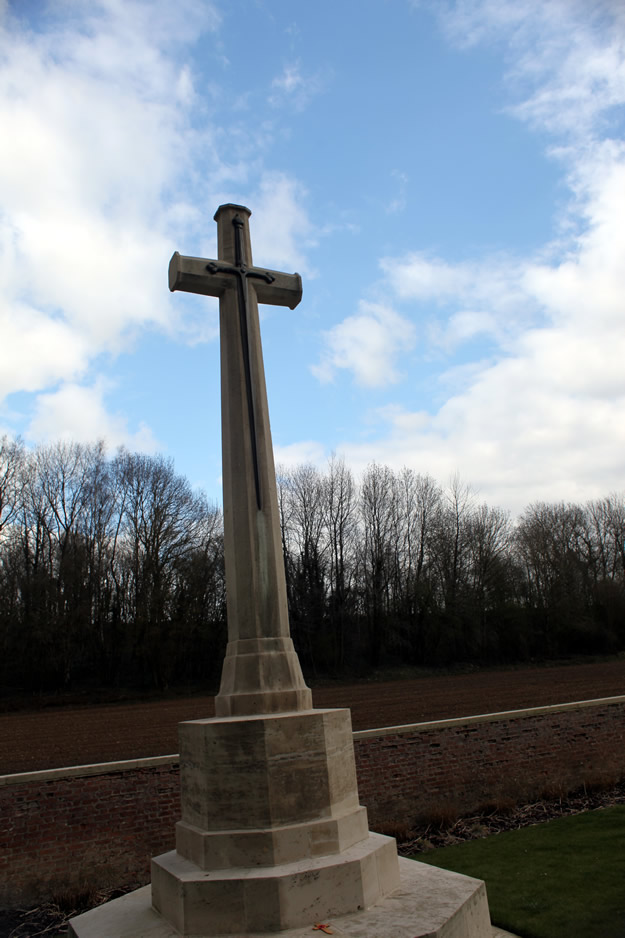
There was a seating area, which featured a plaque in English and French, stating that the land was a “free gift of the French people” for the Allied Armies that fell in 1914-1918. I saw similar plaques all over the Somme.
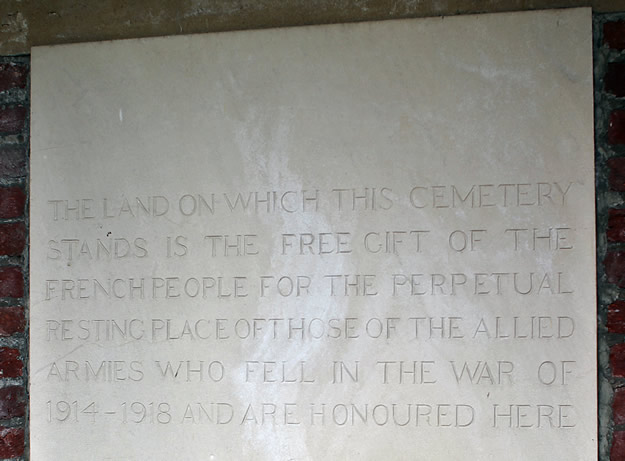
This was a smaller cemetery of the Somme, but it is a good sampling of what you would continually pass as you drove through this region in France.
